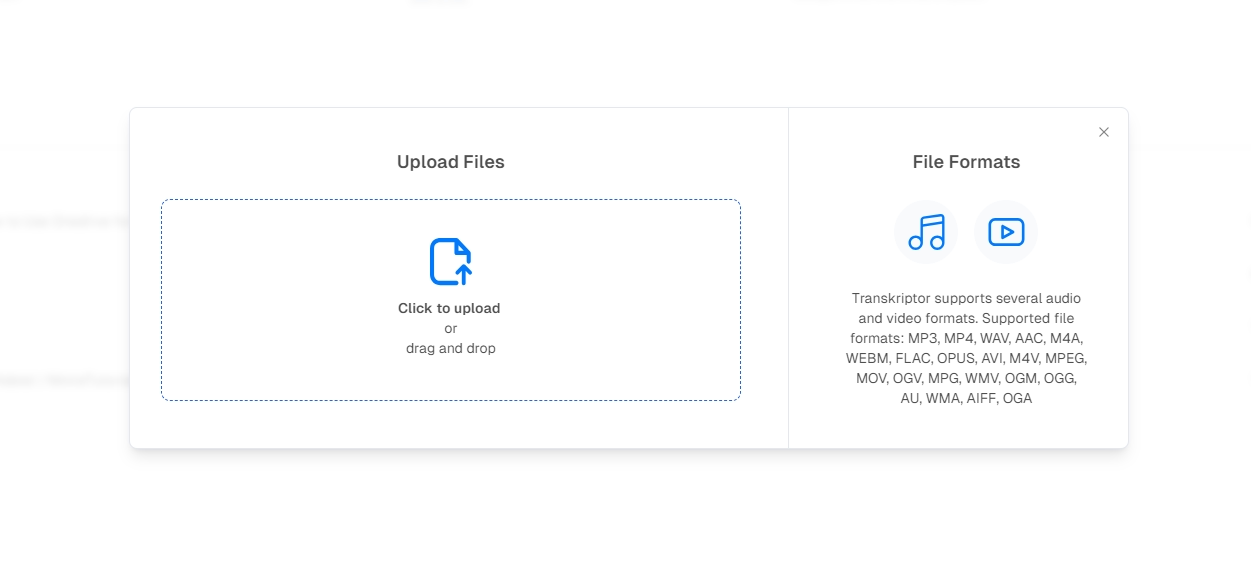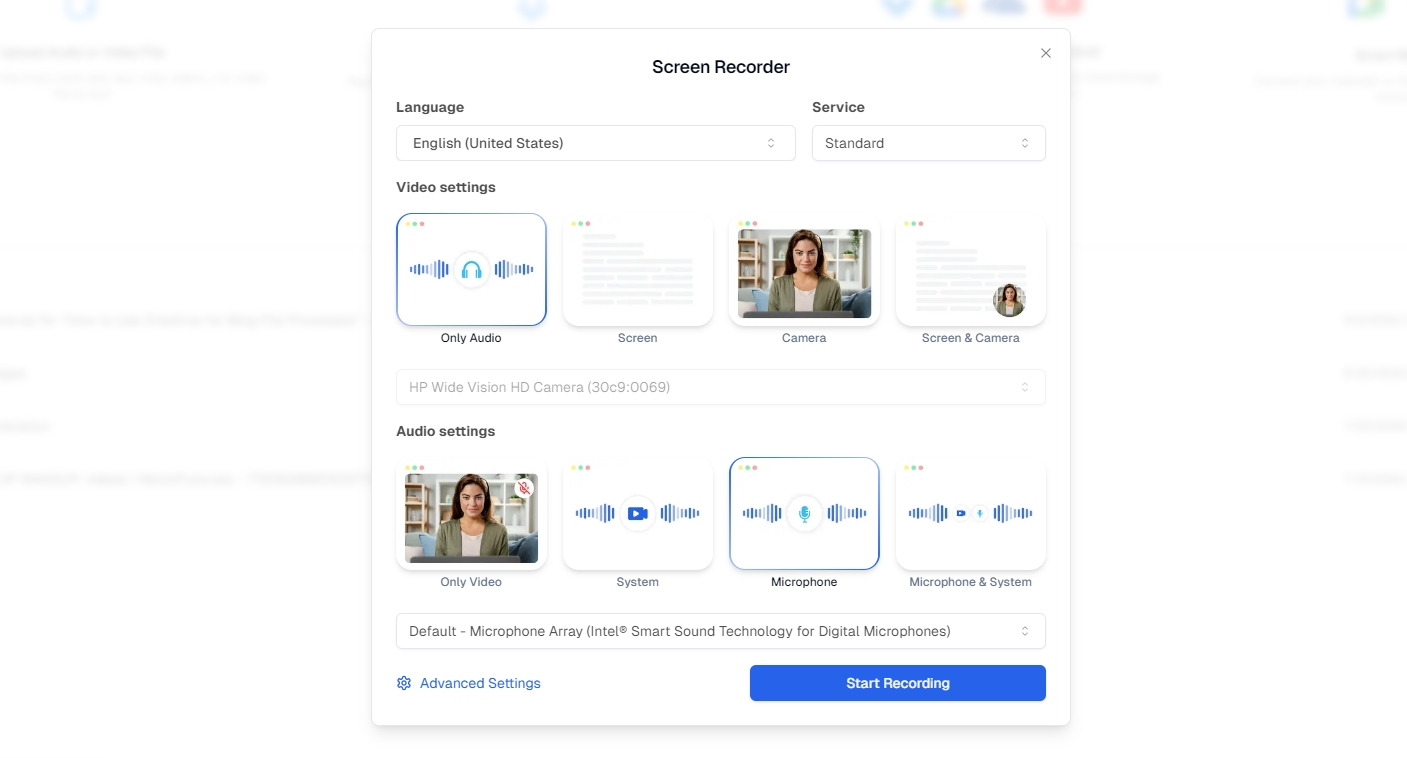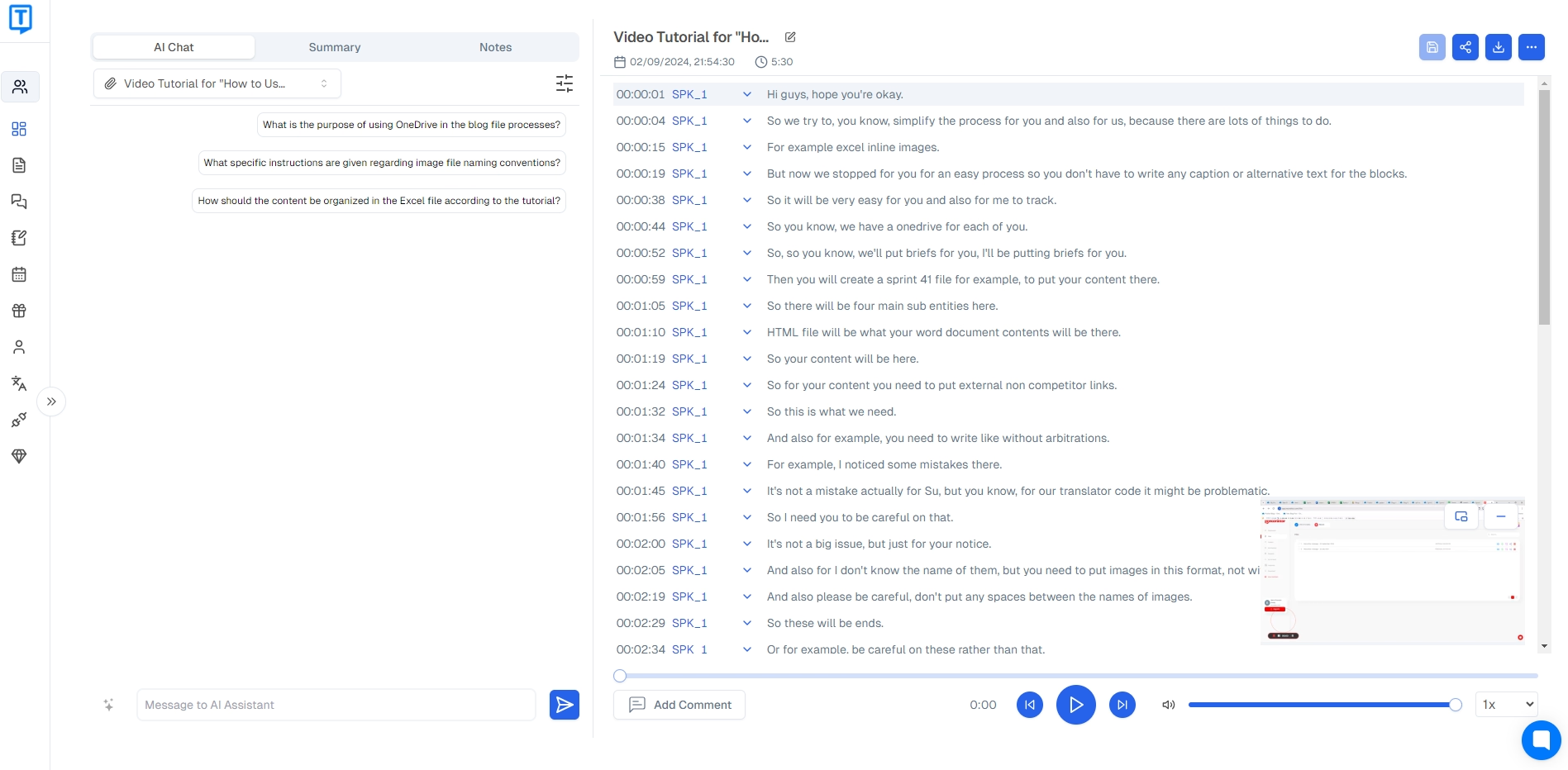Using technology to organize and interpret data efficiently ensures that every piece of information is used to its fullest potential, ultimately enhancing the quality and impact of research outcomes in meeting communication . The increasing importance of data utilization is evident in the business world as organizations focus on evidence-based decision-making, leveraging data-driven strategies to improve productivity, profitability, and overall competitiveness.
Introduction to Data Utilization
In research, data is more than just numbers and facts; it's the foundation for meaningful insights and conclusions. Data utilization involves strategically using all available data to extract valuable information and support informed decisions. This process includes collecting, managing, and analyzing data from various sources, such as interviews, surveys, and observations, to maximize its potential.
Effective data utilization is crucial for researchers aiming to produce high-quality studies that add valuable knowledge to their field. Using data processing techniques and tools, researchers can turn raw data into actionable insights, enhancing the depth and reliability of their outcomes. This article explores the importance of data utilization in modern research and the tools and techniques that help researchers maximize their insights.
What is Data Utilization in Research, and Why is it Important?
Data utilization in research involves strategically using all available data to extract meaningful insights and support informed conclusions. By maximizing data utilization, researchers can effectively manage the extensive information that modern research entails.
This approach strengthens the research foundation, enabling the production of high-quality studies that contribute valuable knowledge to their field. Additionally, data utilization is crucial in research and the business world, where it drives evidence-based decision-making and enhances productivity and profitability.
Defining Data Utilization in the Context of Research
Data utilization in research refers to strategically using all collected data to enhance study quality and depth. It involves gathering, managing, and analyzing data from various sources like interviews, surveys, and observations to extract meaningful insights.
This approach ensures that data is used effectively, maximizing its potential. Data utilization is crucial for improving outcomes and competitiveness in the business world.
Proper data utilization prevents waste, resulting in comprehensive and reliable research outcomes that support firm conclusions and advance field knowledge.
The Importance of Data Utilization in Modern Research
In today’s data-driven world, effectively utilizing data is crucial for researchers. It enables the validation of original research findings, ensuring conclusions are credible. By systematically organizing and analyzing research data, researchers can uncover patterns and trends that might otherwise be missed, leading to more impactful findings.
Modern research generates vast amounts of data, including digital, sensor, and survey data, as well as outputs from simulation software. Researchers must adopt robust data management practices and advanced analysis software to manage this information. Tools like spreadsheets and laboratory notebooks are essential for organizing data, while data mining techniques extract meaningful insights from large datasets.
Adhering to standard operating procedures and workflows ensures data handling consistency and accuracy. Integrating these practices enhances research quality and reliability, advancing the field of study.
IDatautilization is vital in modern research, allowing researchers to make informed decisions and validate findings. Researchers unlock their data's full potential by employing effective data management and analysis techniques, leading to more comprehensive and impactful outcomes.
The Impact of Effective Data Utilization on Research Outcomes
Data utilization significantly improves research outcomes by enhancing accuracy, reliability, and relevance. By efficiently organizing and analyzing data, researchers can uncover patterns and trends that might otherwise be missed, leading to more insightful conclusions. This process also reduces errors, boosting the research's credibility. Maximizing data utilization enables researchers to produce higher-quality work, better informing future studies and practical applications.
Effective data utilization is equally important in the business world. It enhances productivity, profitability, and overall competitiveness.
How Can Transcription Improve Data Analysis in Research?
Transcription simplifies data analysis by converting audio content, like interviews and focus groups, into text. This streamlines the review process, helping researchers quickly identify key points, themes, and patterns. Tools like Transkriptor make data analysis faster and more precise, allowing researchers to concentrate on interpretation instead of manual transcription.
Benefits of Using Transkriptor for Data Analysis
Transkriptor streamlines research by converting audio recordings to text, saving time and effort compared to manual transcription. This allows you to focus on analyzing data rather than writing it down. Its high accuracy ensures all details from interviews, focus groups, and meetings are captured correctly, aiding in identifying key themes and patterns in qualitative data.

Transkriptor accurately captures details from interviews, focus groups, and meetings, which is essential for identifying key themes in qualitative data.
Clear text records simplify coding and categorization, leading to more thorough analysis.
With Transkriptor, researchers can streamline workflows, reduce errors, and enhance data analysis quality.
Experience Transkriptor to simplify data analysis and improve research accuracy. Try it today to streamline your workflow and uncover deeper insights from your data.
Enhancing Data Collection with Audio-to-Text in Research
Audio-to-text technology boosts data collection by converting spoken content into text. Tools like Transkriptor efficiently transcribes audio from interviews or observations, ensuring accurate preservation of spoken information. This enables researchers to gather detailed data essential for understanding complex subjects while simplifying storage and retrieval. By converting audio to text, researchers enhance their data's depth and breadth, leading to more comprehensive and insightful outcomes.
What Tools Help Maximize Data Utilization in Research?
Maximizing data utilization in research involves using tools that efficiently handle data collection, organization, and analysis. These tools transform raw data into actionable insights, saving time and reducing errors. By incorporating the right tools into workflows, researchers can enhance the quality and depth of their analysis, leading to a more comprehensive understanding of their subjects.
Overview of Speech-to-Text for Data Collection
Speech-to-text technology is essential for data collection in research, particularly in qualitative studies like interviews and focus groups. It accurately converts spoken words into text, simplifying analysis and reference. This saves researchers time and effort, allowing them to focus on content instead of manual transcription.
It's beneficial for projects with extensive audio data, ensuring every detail is captured and accessible. Speech-to-text enhances the thoroughness and accuracy of data collection, leading to more prosperous research outcomes.
Advantages of Voice-to-Text Tools like Transkriptor in Research Studies
Voice-to-text tools like Transkriptor offer significant advantages in research studies by simplifying the transcription process and improving data accuracy.

These tools convert audio recordings into text, allowing researchers to quickly capture and analyze verbal data from interviews, discussions, and observations. Transkriptor saves time and reduces errors, enhancing data accuracy by minimizing manual transcription.
The technology improves data organization, making identifying key themes and insights easier.
Voice-to-text tools boost data utilization, streamline workflows, and produce more detailed findings for studies requiring extensive qualitative data.
Top Strategies for Maximizing Data Utilization in Research
Maximizing data utilization in research is vital for gaining insights and ensuring reliable results. Key strategies include leveraging technology for efficient data collection and analysis, maintaining organized data, and integrating multiple sources. These approaches enhance data utilization, leading to more accurate and impactful research outcomes.
Utilize Transcription with Tools for Efficient Data Analysis and Coding
Transcription tools like Transkriptor are essential for efficient data analysis and coding in research. By converting audio recordings, such as interviews and focus groups, into text, they eliminate the need for manual transcription. This speeds up the review process and enhances accuracy, ensuring every detail is noticed. Clear text records allow data to be effectively coded and categorized, leading to reliable findings. Transkriptor streamlines transcription, allowing researchers to focus on drawing meaningful insights from their data.
Improve Data Collection Accuracy with Speech to Text Technology
Speech-to-text technology enhances data collection accuracy by precisely capturing spoken words and converting them into text. This is particularly valuable in research where exact language and context are crucial.
Tools like Transkriptor automate transcription, reducing errors common in manual note-taking. Researchers gain a faithful representation of spoken content, improving data quality.
Accurate data capture supports credible research outcomes, ensuring analysis reflects the original recordings' content and context.
Leverage Voice to Text for Real-Time Data Capture in Research
Voice-to-text technology is a vital tool for capturing real-time data in research. It allows researchers to convert spoken words into text instantly during live interviews, focus groups, or observations. This immediate capture eliminates the need for later transcription, reducing delays and enhancing accuracy. Researchers can focus on conversations, improving the quality of data collected for more meaningful analysis and conclusions.
Optimize Meeting Notes for Research Projects with Automated Solutions
Automated transcription solutions like Transkriptor can significantly optimize meeting notes for research projects.

These tools efficiently convert spoken content from meetings and brainstorming sessions into text, saving time and effort. They also ensure the accurate capture of key points, decisions, and action items for future analysis.
Automated solutions allow researchers to focus more on discussions than note-taking, enhancing understanding and engagement.
Well-documented meeting notes improve project management and lead to more effective research outcomes.
How to Integrate Transcription and Voice-to-Text Tools in Research Workflows?
Integrating transcription and voice-to-text tools into research workflows boosts efficiency and data accuracy. Tools like Transkriptor convert spoken content from interviews, focus groups, and meetings into text seamlessly.
Voice-to-text can capture real-time data during live sessions for immediate analysis.
Incorporating these tools into your research workflow will save you time, reduce errors, and allow you to concentrate on data analysis and interpretation.
Steps for Implementing Transcription Services Like Transkriptor
Implementing transcription services like Transkriptor in research workflows can significantly improve efficiency and data management.
Begin by identifying stages in your research where transcription could save time, such as interviews or meetings. Introduce Transkriptor to your team and integrate it with existing tools for a seamless workflow.
Set up a simple process for uploading audio files and converting them to text, ensuring everyone knows how to use the tool effectively. Monitor transcription quality regularly to maintain accuracy and make necessary adjustments.
By following these steps, researchers can efficiently incorporate transcription into their workflows, enhancing data collection and analysis while minimizing errors and saving time.
Training Research Teams to Use Digital Tools Effectively for Enhanced Data Management
Training research teams to use digital tools like Transkriptor efficiently is crucial for optimizing data management. Begin with sessions on tool basics and practical applications. Encourage hands-on practice to build confidence in real-world scenarios. Maintain an open space for questions and troubleshooting. Regularly update training to cover new features and best practices. Well-trained teams manage data more effectively, enhancing accuracy and strengthening research outcomes.
What are the Benefits of Improved Data Utilization for Researchers?
Improved data utilization significantly benefits researchers, enhancing their efficiency and effectiveness.
You can draw more accurate and meaningful conclusions, leading to more impactful findings using collected data, ultimately enhancing academic productivity . They can also maximize their data's potential, driving more meaningful and impactful research by leveraging tools like Transkriptor.
Enhancing Research Quality and Reliability
Improved data utilization significantly enhances research quality and reliability. Researchers produce comprehensive and well-supported findings by effectively organizing and analyzing all collected data.
Tools like Transkriptor convert audio data into text, simplifying review and cross-referencing while reducing errors and capturing key insights.
Proper data management enables the confident presentation of conclusions backed by solid evidence, thus boosting research credibility and impact.
Gaining Deeper Insights with Efficient Data Handling through Transkriptor
Efficient data handling is crucial for gaining insights in research. Tools like Transkriptor streamline this by converting spoken content into text, helping researchers quickly identify patterns and trends. This efficiency allows for a deeper understanding and frees time to explore various perspectives. Using Transkriptor, researchers can maximize their data's potential, leading to more comprehensive and impactful research outcomes.
Conclusion
Maximizing data utilization in research ensures reliable, high-quality outcomes. Tools like Transkriptor improve data accuracy and simplify management, leading to deeper insights and more substantial conclusions. Embrace data optimization tools to enhance insights and advance your field. Unlock your research potential with Transkriptor—sign up today to streamline workflows and boost accuracy. In business, data utilization is vital for improving outcomes and competitiveness through evidence-based decision-making and data-driven strategies.

